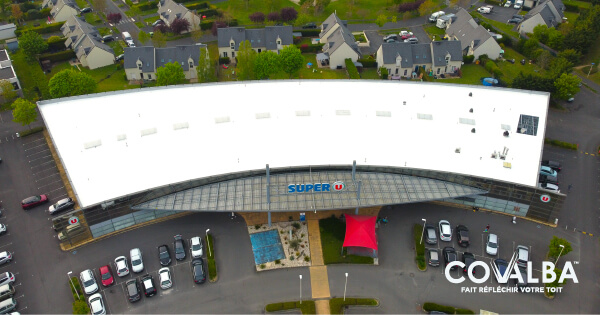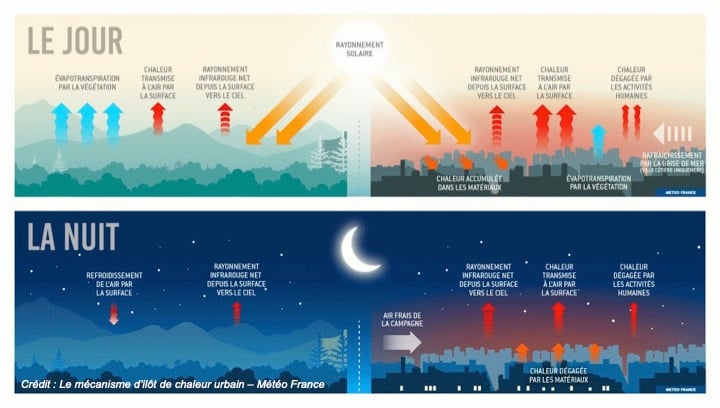When it comes to thermal optimization of buildings, the solutions available are varied. From the installation of a green electricity source to energy renovation work, individuals and professionals can turn to a full range of methods. Among all these solutions, the cool roof is becoming increasingly popular. This thermal optimization method involves coating the roofs of buildings with cool roof paint. The roof reduces the building's interior temperature and saves money by limiting the use of air conditioning.
What is a cool roof?
The idea of a cool roof is to exploit the flat roof of a building by limiting its surface temperature. In this way, the impact of the sun's rays on the roof is greatly reduced, as the roof does not absorb heat and transfer it to the rest of the building structure. This translates into a reduction in temperature inside the building of up to 10 degrees in the case of the best heat-reflective paints.
To achieve this, it is essential to apply a cool roof paint. Roofs store heat because their dark or black color has a very poor albedo. As a result, they absorb the sun's rays. Whether it's a protective membrane or paint, the latter is not treated to reflect the sun's rays. It therefore absorbs all the sun's rays, which greatly increases the temperature.

The anti-heat white paint used to achieve a cool roof has a very good albedo as well as a high Solar Reflectance Index (SRI).
💡Ourcomplete dossier on reflective paints and roofs
What are the benefits of cool roofing?
Cool roofing is a method of reflecting the sun's rays and not absorbing them. This translates into several benefits:
- Reduction in roof surface temperature and interior temperature. By halving the maximum roof temperature, a cool roof greatly reduces heat build-up inside the building.
- Savings on energy bills. With a reduced indoor temperature, you can save on your electricity bill by limiting the use of air conditioning.
- Longer roof life.
- Improved living conditions, employee well-being and, in the case of shopping malls, a better in-store customer experience.
For which types of building is a cool roof suitable?
The application of cool roof paint can be used in a number of ways. Firstly, this solution is particularly suitable for professionals with large sales areas. In this case, the cool roof enables the interior temperature to be reduced passively, without the need for air conditioning. By extension, this method can also be used by companies with large warehouses or storage facilities.

Still in the professional sphere, educational or administrative facilities can use cool roofs to improve living conditions for building occupants.
Finally, cool roofs can also be used in apartment buildings or private homes.
What impact does a cool roof have on the local ecosystem?
In addition to all the benefits it already offers, the cool roof also has an impact on the local ecosystem. In France, major cities such as Paris, Lyon and Bordeaux are affected by a problem linked to urban planning: urban heat islands. An urban heat island, or UHI, is the result of the accumulation of numerous buildings, roads and concrete structures in a single location. Blocked by buildings, air can no longer circulate. What's more, building materials absorb all the heat during the day and reject it at night.
The result is what is known as a heat island, as summer temperatures in urban areas rise drastically. Two methods can be used to reverse this trend. On the one hand, increasing urban vegetation reduces the impact of the UHI on the urban area concerned. Secondly, buildings can be fitted with technical solutions designed to stop them absorbing heat. This is exactly the case with cool roofs.
Particularly in the city, the cool roof is therefore proving useful in its local ecosystem for reducing ambient temperature and mitigating the urban heat island effect.

To find out more :